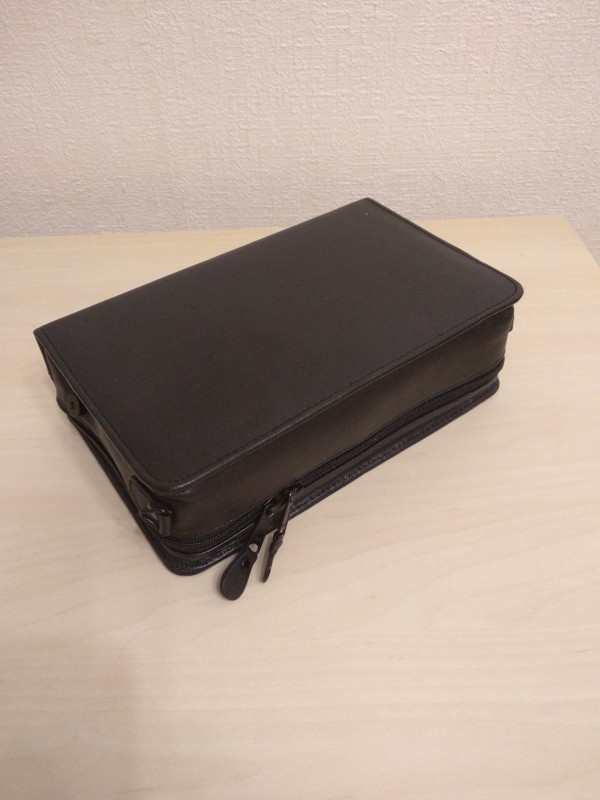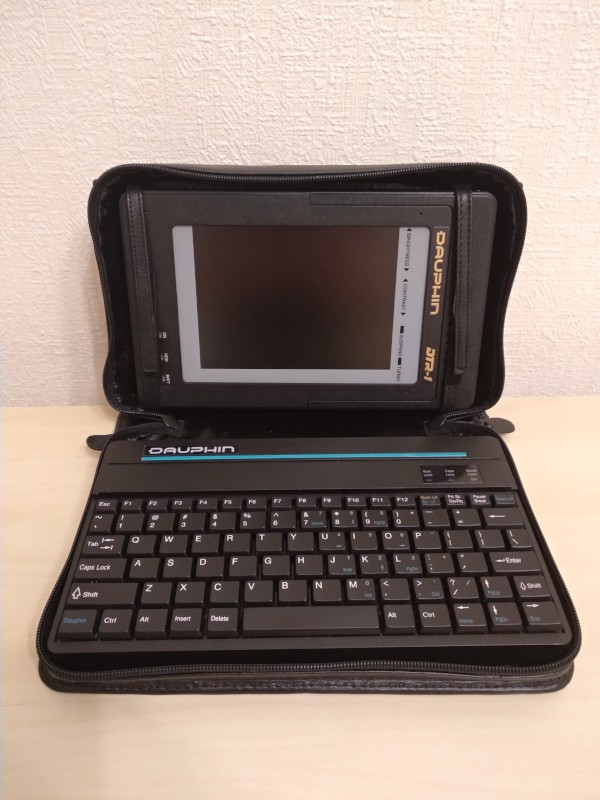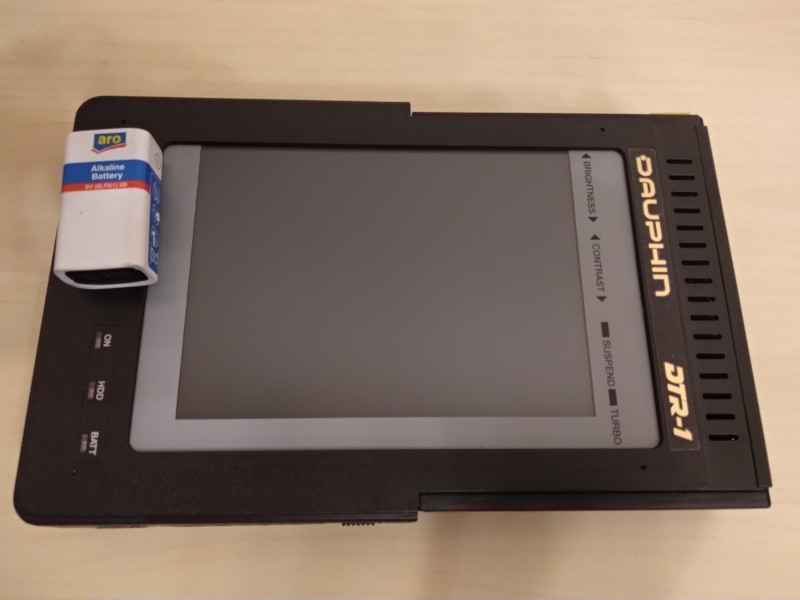Once upon a time...
There is a moment in the life of every man, when you stop and look into the past.
The desire to turn back the spiral of time and to feel again the things of the youth is irresistible.
Family man suddenly buys a Harley-Davidson and a leather jacket and starts to ride.
And I'm not an exclusion.
Twenty years ago my friend, who is a good electronic repairman, said me: "I have the thing you'll definitely like". And showed me the leather box:

And I opened this Pandora's box...

While in 2000 we do not suffer from the lack of computers, laptops and other electronics, this system captured me at a glance:
- "How much do you want?" - "No, I'm not going to sale it." - "Nevermind. Say the amount!" - "Uhm.. Fifty bucks" - "Deal!"
It was Dauphin DTR-1 - completely unknown beast for me at that time. Manufacturing date was about 1993 or 1994 and it was absolutely not impressive from performance point at 2000x. Who was interested in 486slc system with 4Mb of RAM and 40Mb HDD? It was quite used also: external battery was lost, internal battery was cut off, two pins of COM connector was broken and soldered by wires, pen has broken battery compartment. Power supply was lost, but providing 12V@3A was not a problem even twenty years ago ;)
Many old systems died from NiCd battery leakage, but not this DTR-1 - my friend is a good specialist and cut off the internal battery before it leaks.
Digging the Internet, I've found that DTR-1 may optionally have an external floppy, up to 6Mb RAM, and a network card. Mine has none and only 4Mb of RAM.
System module have dimensions (approx) 142 x 225 x 35 mm. You can see it with 9V battery for comparison:

I was a Linux adopter from the 1997 and was trying to setup Slackware 3.4. With 4Mb it may happen, but with 40Mb HDD, absence of NIC and floppy is was pretty impossible. It was the first challenge, that drives me to upgrade the system. As the internal HDD has standard 44pin IDE connector, it was possible to setup Slack on the "Big Brother" and run it later on DTR-1. But 40Mb was too few anyway.
So, this project actually started twenty years ago.
Back to the ground.
Well, literature exercises is a beautiful thing, but let's go back to the hard technical ground.
Machine was born in ~1993 and have the following specs:
The main feature of the system is that it is Tablet PC from 1993. It has a detachable case, not like many laptops of that era. It has an inductive electronic pen, that can allow work in the tablet mode, with some software support, for example Windows for Pen Extension.
Two COM ports were tied to Rockwell Modem (COM1) and Kurta Tablet Pen (COM2). I try to run Rockwell modem over the PSTN phone line, but the results was awful: modem do not support V.42 error correction. Sometimes I was able to connect Internet by provider's modem pool, but the connection was very unstable. The other thing is that PIO controller have only 16450 UART implementation, so no 57600 connection rate supported.
NIC was (very) optional. I have none in 2000 so I try to use SLIP/PLIP in Linux to connect to outside. Last year I suddenly found these NICs on eBay and it became a trigger to start this project.
Strangely, the system may have PS/2 mouse, but is was not implemented. I'll touch this issue when I'll discuss KBC.
Dauphin DTR-1 was unsuccessful: it was created too early: neither hardware, nor software of that era were not ready for tablet computing. Networks were not ready also.
PS. Of course, photos were done today, but that first system, that I bought twenty years ago are also alive and it will participate the photo session sooner.
Discussions
Become a Hackaday.io Member
Create an account to leave a comment. Already have an account? Log In.